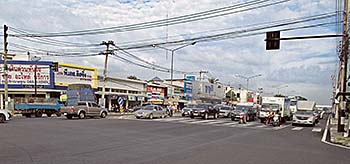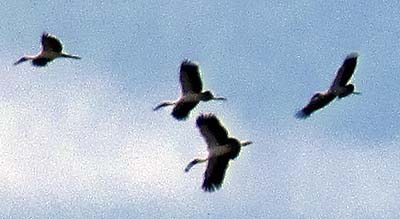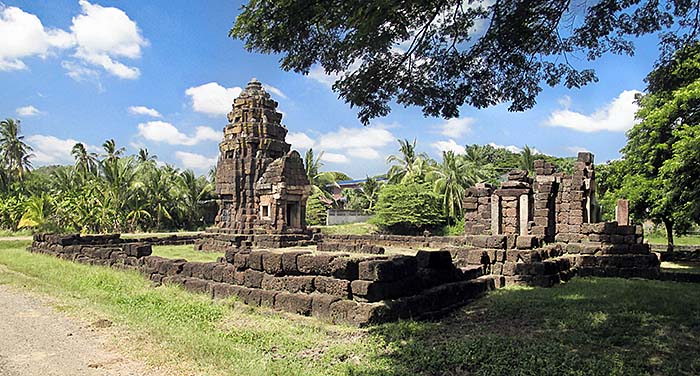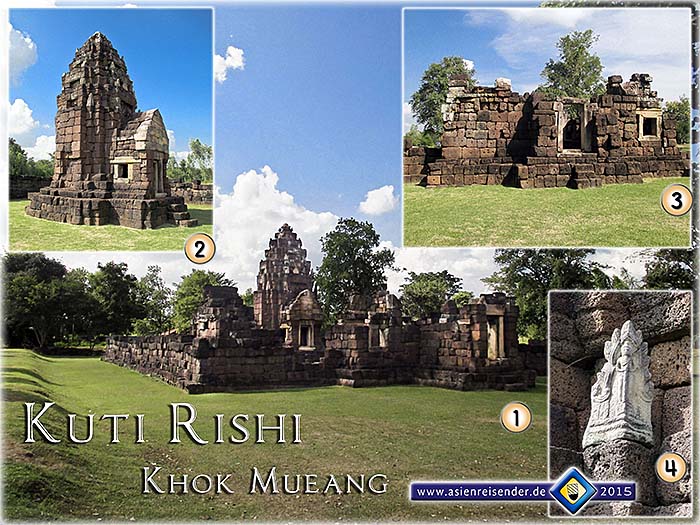Nang Rong
Nang Rong is a Thai town in south Isan, Buriram Province.
For a traveller there is no reason to visit Nang Rong exept it's proximity to a couple of Angkorean temple ruins, namely Phanom Rung, maybe the nicest historical park in Thailand, Prasat Muang Tam and some smaller places like two of the medieval hospitals built in the reign of Jayavarman VII (1181 - 1220 CE). Prasat Ta Muen is still reachable, but about 100km away.

Nang Rong is minted by the main overland road. Image by Asienreisender, 11/2015
This place is, one has to confess it, pitugly. There is absolutely nothing of interest in town. The cultural highlights in this desert of naked concrete are the bus station and the unavoidable Seven-Eleven at the songtheaw station. The only half-way nice spots are a small double lake south of the main road with a few casuarinas at the shore, where one can hang out for a while in a hammock, and another lake north of the hospital with some rustic restaurants on verandas on the water.
Waterfowls

On the way between the temple sites, suddenly a great number of water birds came out of the rice fields and turned their circles in the sky. Image by Asienreisender, 2015
As though that weren't bad enough, most of the place is aligned over some kilometers along overland route 24, an eight lane highway (four lanes in each direction) with a division in the middle and a hell of a traffic on it, and a lot of trucks use the street. Noise, dust and smog are tremendous, crossing the road is thrilling and the sidewalks are, as usually in Southeast Asian countries, blocked with parked vehicles, food stalls, flower pots, expanded workshops and different crap of all kind.
Many of the sideroads carry still too much traffic, what ceases in the side-sideroads. There are also parts in town with blind alleys, where nicer houses with small gardens for the standard middle-class squares are placed.
Nang Rong is listed with allegedly 21,000 (en.wikipedia.org) or 24,000 inhabitants (de.wikipedia.org). This is just another example why I don't trust statistics; the much larger province capital Buriram is listed with 27,000 people.
Kuti Rishi Ban Nong Kua Lai

The Angkorean king Jayavarman VII (reign: 1181 - 1220 CE) was the king who ordered the construction of more buildings than any other Khmer king. Jayavarman VII is the king with which name the construction of the Bayon and the new capital of Angkor Thom is associated. According to a stone inscription found in Prasat Ta Phrom (Angkor Archaeological Park), he ordered also the construction of 102 so called hospitals or nursering homes. These hospitals were each accompanied by a laterite shrine and a laterite pool (see also 'Prasat Chom Phra' in Surin Province). The 'hospitals' themselves were, as all the non-spiritual buildings, built in wood and have been rotten away since long. This site at Ban Nong Kua Lai is believed having been one of these hospital shrines. In the old Khmer inscriptions the hospitals are called Arogyasalas, here nowadays they are called Kuti Rishi.
Kuti Rishi Nong Kua Lai lies at the foot of Phanom Rung (the mountain). Image by Asienreisender, 11/2015
Kuti Rishi Ban Khok Mueang

The Kuti Rishi (Arogyasala) at Khok Mueang, very close to Prasat Muang Tam. The whole compound seen from east southeast, against the early afternoon sun (1). The main sanctuary (2) is nicely restorated. The remains of the former entrance chamber (3), what was once a goptura. A temple guardian placed in one of the niches of the main tower (4). All images and photocomposition by Asienreisender, 11/2015